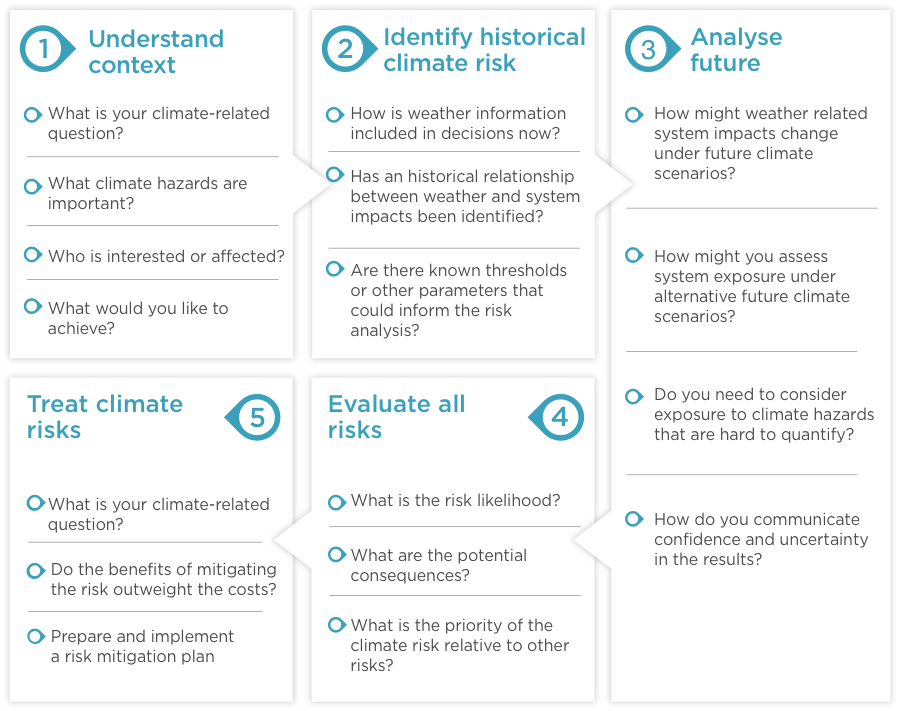Climate Change in Australia
Climate information, projections, tools and data
ESCI User Guidance
The ESCI Climate Risk Assessment Framework
Australia's climate is changing; the continent has warmed by 1.4 oC since 1910 and the number of extremely high temperature days has increased. Since 1970, there has been 16% less rainfall in April to October in the south-west, 12% less rainfall in April to October in the south-east since the late 1990s, and less streamflow in southern Australia. There has been an increase in extreme fire weather in Australia since 1950, and fewer tropical cyclones since 1982.1
These trends are likely to continue in future and over the next 20 to 80 years will affect the safety, reliability, resilience and financial performance of all electricity assets, and the performance of the national electricity market as an integrated system.
The ESCI project provides a framework for integrating climate change risk into sector decision-making. The User Guidance goes through the framework (Figure 1) step by step and recommends the selection and appropriate use of climate information. With the toolkit provided here, the ESCI project enables the electricity sector to integrate the assessment of physical risk from climate change more confidently and consistently in long-term planning.

Figure 1 ESCI Climate Risk Assessment Framework.
Notes
1 BoM and CSIRO (2020) State of the Climate



